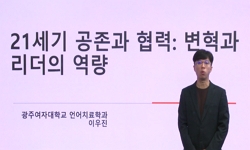Korean folk paintings are practical paintings which decorated the house from the aristocracy to the common people in the traditional society of Korea. The contents of Korean folk paintings vary from the visualization of popular belief to the cultivati...
http://chineseinput.net/에서 pinyin(병음)방식으로 중국어를 변환할 수 있습니다.
변환된 중국어를 복사하여 사용하시면 됩니다.
- 中文 을 입력하시려면 zhongwen을 입력하시고 space를누르시면됩니다.
- 北京 을 입력하시려면 beijing을 입력하시고 space를 누르시면 됩니다.
https://www.riss.kr/link?id=A75221398
- 저자
- 발행기관
- 학술지명
- 권호사항
-
발행연도
2006
-
작성언어
Korean
-
주제어
민간신앙 ; 인성의 교화 ; 가택신 ; 세속의 공간 ; 신의 세계 ; 공존 ; 상생 ; 용도 ; 연상적 ; 미학적 ; 복합적 ; 내적 질서 ; popular belief ; cultivation of the human nature ; household gods ; a secular place ; sacred of gods ; co-existence ; mutual winning ; usage ; association ; aesthetics ; complex ; inner order
-
등재정보
KCI등재
-
자료형태
학술저널
-
수록면
513-550(38쪽)
- 제공처
-
0
상세조회 -
0
다운로드
부가정보
다국어 초록 (Multilingual Abstract)
Korean folk paintings are practical paintings which decorated the house from the aristocracy to the common people in the traditional society of Korea. The contents of Korean folk paintings vary from the visualization of popular belief to the cultivation of the Confucian human nature. This paper aims at examining the meaning and order of the Korean folk paintings which were displayed in the houses of Chosun Dynasty. The focus is given to the placement of them in the house and the treatment of the space in the paintings themselves. A house is regarded not only as a space of the family members but also as a place of gods in the traditional society. Many household gods are thought to live in the house and to govern a certain specific place respectively. Each of them is thought to protect the specific place of the household against any evil power and to take charge of the fortune of the household. That's why the house is not only a secular place of the family members but also a sacred place of the household gods. This thought is accepted by all the members of Chosun Dynasty from the popular people to the aristocracy. As gods are visualized in the paintings, the sacredness and the sacred world of the household gods are kept in the houses of the general public. The place where the paintings are located is thought to be a kind of holy space. The folk paintings are a kind of medium which connects the family members and the household gods, too. As there co-exist the sacredness and the secularity in the houses of the general public, so there co-exist the real world and the unreal world in the paintings themselves. The painters of the folk paintings made the co-existence quite clear by suggesting, repeating, reiterating and expressing the theme directly and indirectly. They accomplished this difficult task by means of using the lines, surface, forms, colors and qualitative feelings technically. As the conflicting relationship is not so strongly emphasized but harmonized in the end, the inner order of co-existence is accomplished in the paintings. The function of the folk paintings is very complex: we should consider them in the aspect of purpose, usage, demand, association, and aesthetics.
목차 (Table of Contents)
- I. 연구의 범위
- II. 민가의 공간과 민화
- 1. 민가의 공간형성과 전통사상
- 2. 공간의 형태와 영역
- 3. 여성공간과 민화
- I. 연구의 범위
- II. 민가의 공간과 민화
- 1. 민가의 공간형성과 전통사상
- 2. 공간의 형태와 영역
- 3. 여성공간과 민화
- 4. 도배와 민화
- III. 민화의 기능과 공간연출
- 1. 공간의 무대장치
- 2. 윤리교육의 지침서
- 3. 장치의 방법
- 4. 상징적 공간
- IV. 연출의 성과
- 1. 시각적 즐거움
- 2. 정서적 안정
- 3. 인심의 순화
- V. 맺음말
- 참고문헌
- Abstract
동일학술지(권/호) 다른 논문
-
- 동아시아고대학회
- 徐鍾源
- 2006
- KCI등재
-
- 동아시아고대학회
- 金相洪
- 2006
- KCI등재
-
- 동아시아고대학회
- 宣美羅
- 2006
- KCI등재
-
東아시아의 海洋空間에 관한 再認識과 活用 -동아지중해 모델을 중심으로-
- 동아시아고대학회
- 尹明喆
- 2006
- KCI등재





 eArticle
eArticle






